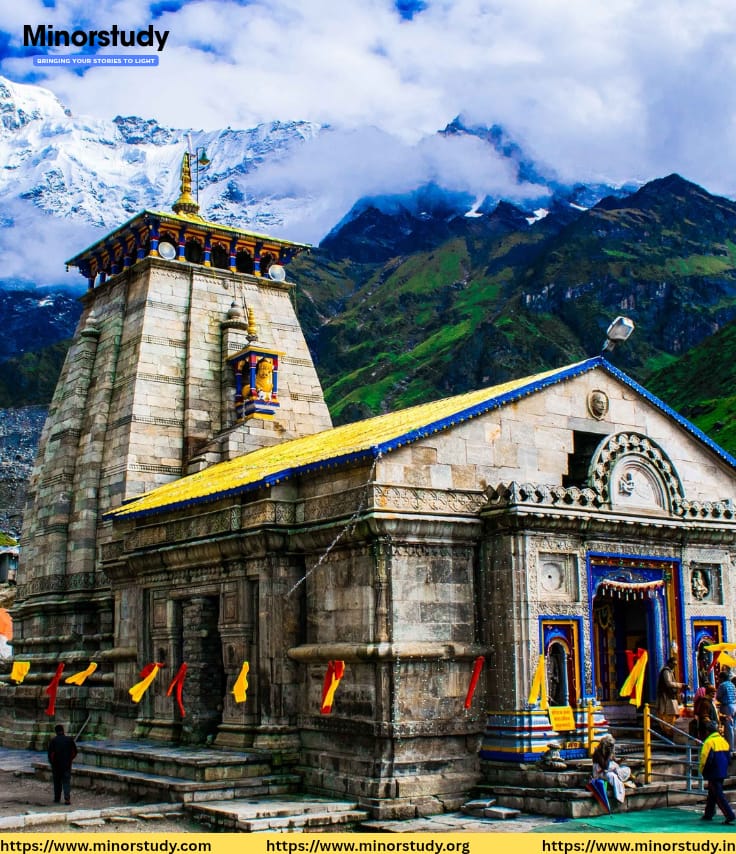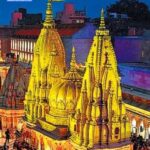11 Powerful Reasons Why Kedarnath Temple Will Leave You Speechless – History, Facts & Significance
Introduction: The Sacred Majesty of Kedarnath Temple
Kedarnath Temple: High in the serene Himalayas, nestled at an elevation of 3,583 meters (11,755 ft) near the Mandakini River in Uttarakhand, India, lies one of the most revered shrines in Hinduism — Kedarnath Temple. A symbol of devotion, resilience, and spiritual transcendence, Kedarnath is not just a temple; it is an emotion, a journey, and an awakening.
- Introduction: The Sacred Majesty of Kedarnath Temple
- 📜 Historical Background of Kedarnath Temple
- 📌 Key Facts About Kedarnath Temple
- 📅 Timeline of Events
- 🌄 Spiritual and Cultural Significance
- 💬 FAQs – Frequently Asked Questions
- Q1. Who built Kedarnath Temple originally?
- Q2. How can I reach Kedarnath?
- Q3. When is the best time to visit Kedarnath?
- Q4. What is the Kedarnath temple made of?
- Q5. What happens in winter?
- 🙏 Wishing and Devotional Practices
- 🧠 Important Life Lessons from Kedarnath Temple
- 1. Faith Overcomes Fear
- 2. Resilience in Adversity
- 3. Simplicity is Sacred
- 4. Nature and Divinity Are One
- 📌 Importance in Our Life and Society
- 🧭 Conclusion: Daily Life Impacts and Final Thoughts
- 🔖 Suggested Reading/Viewing
- 📣 Share the Blessing
Dedicated to Lord Shiva, Kedarnath is the 12th Jyotirlinga and a crucial pillar of the Char Dham Yatra in Uttarakhand. This temple is not merely a stone structure in the cold terrains — it’s a bridge between mortality and the divine.
📜 Historical Background of Kedarnath Temple
1. Mythological Origins
The temple’s roots go back thousands of years. According to Hindu mythology, it is believed to have been originally built by the Pandavas from the Mahabharata era. After the Kurukshetra war, they sought Lord Shiva’s forgiveness for their sins. Shiva eluded them and hid in the form of a bull. When Bhima tried to capture the bull, it vanished into the ground, and its hump appeared in Kedarnath. The rest of the body emerged in other locations — forming the Panch Kedar temples.
2. Adi Shankaracharya’s Contribution
The current structure of Kedarnath was said to have been revived by Adi Shankaracharya in the 8th century CE. He is believed to have also taken Samadhi behind the temple, where his shrine still stands today.
📌 Key Facts About Kedarnath Temple
| Fact | Details |
|---|---|
| Location | Rudraprayag district, Uttarakhand, India |
| Elevation | 3,583 meters (11,755 ft) |
| Main Deity | Lord Shiva (as Kedarnath – the “Lord of the Field”) |
| Architectural Style | North Indian Himalayan stone architecture |
| Pilgrimage Season | April/May to October/November (closed during winter) |
| Significance | Part of Char Dham and Panch Kedar |
| Built by | Pandavas (mythological) / Revived by Adi Shankaracharya |
| Accessibility | 16–18 km trek from Gaurikund; helicopter services available |
| Disaster & Survival | Survived the 2013 Uttarakhand floods miraculously |
📅 Timeline of Events
Mahabharata Era – Pandavas’ connection with Lord Shiva.
8th Century CE – Revival by Adi Shankaracharya.
2000 – Became part of the newly formed state of Uttarakhand.
2013 – Massive floods; temple miraculously survived due to a giant boulder.
2014–Present – Restoration and infrastructure development under the Kedarnath Re-development Project.
🌄 Spiritual and Cultural Significance
1. 12th Jyotirlinga
Kedarnath is one of the 12 Jyotirlingas, making it an essential Shiva temple in Hinduism. The Jyotirlingas are considered highly auspicious as they are said to be self-manifested.
2. Char Dham of Uttarakhand
It forms part of the Char Dham Yatra along with Badrinath, Gangotri, and Yamunotri. Every year, thousands of devotees undertake this arduous yatra to cleanse their sins and attain moksha (liberation).
3. Panch Kedar Pilgrimage
The other Panch Kedar temples are Tungnath, Rudranath, Madhyamaheshwar, and Kalpeshwar, all forming different parts of Lord Shiva’s body.
4. Symbol of Resilience
The 2013 floods wiped out the entire region, yet the Kedarnath Temple remained almost untouched, protected by a divine boulder, now revered as “Bhima Shila.”
💬 FAQs – Frequently Asked Questions
Q1. Who built Kedarnath Temple originally?
A: It is believed to have been built by the Pandavas and later revived by Adi Shankaracharya.
Q2. How can I reach Kedarnath?
A: You can trek from Gaurikund (around 16–18 km) or take helicopter services from various base points like Guptkashi or Phata.
Q3. When is the best time to visit Kedarnath?
A: The temple opens around April-May and remains accessible until October-November, depending on the weather.
Q4. What is the Kedarnath temple made of?
A: It is constructed with large, heavy, and evenly cut grey stone slabs over a rectangular platform.
Q5. What happens in winter?
A: The deity is moved to Ukhimath and worshipped there during winter months.
🙏 Wishing and Devotional Practices
If you’re greeting someone who is about to go on the Kedarnath Yatra, a respectful and spiritual wish might be:
“May your Kedarnath journey bring divine blessings, inner peace, and eternal connection with Lord Shiva.”
Many also chant:
“Har Har Mahadev! Om Namah Shivaya!”
before or during their trek to maintain spiritual focus.
🧠 Important Life Lessons from Kedarnath Temple
1. Faith Overcomes Fear
Despite the dangers of terrain and weather, devotees travel long distances with only faith as fuel.
2. Resilience in Adversity
The temple’s survival during the 2013 floods reminds us that even in the face of destruction, spiritual strength protects.
3. Simplicity is Sacred
The temple’s humble stone architecture and minimalism reflect the true essence of devotion.
4. Nature and Divinity Are One
Set in the lap of the Himalayas, Kedarnath teaches us the deep spiritual bond between nature and divinity.
📌 Importance in Our Life and Society
Cultural Heritage: Kedarnath Temple is a living example of India’s ancient spiritual and architectural wisdom.
Tourism & Economy: It significantly boosts Uttarakhand’s economy through pilgrimage tourism.
Unity in Diversity: People of all regions, languages, and backgrounds come together for the yatra.
Environmental Awareness: Its fragile ecosystem educates pilgrims about eco-conscious living.
Mental Peace: A visit to Kedarnath often leads to deep inner calm, reflection, and transformation.
🧭 Conclusion: Daily Life Impacts and Final Thoughts
Kedarnath is not just a temple. It is a mirror of our inner journey — a path filled with struggle, faith, surrender, and elevation.
In today’s chaotic world, Kedarnath reminds us of timeless truths:
Spirituality matters.
Nature is divine.
Faith can move mountains.
Sacred spaces still exist.
For many, even viewing the temple from afar via live darshan brings tears of devotion. Whether you’re religious or spiritual, Kedarnath touches something deep inside the soul.
🔖 Suggested Reading/Viewing
“Char Dham Yatra Documentary – Discovery India”
“Kedarnath: Journey to the Divine” – Book by Swami Vidyanand Ji
Official Government Portal: https://badrinath-kedarnath.gov.in
📣 Share the Blessing
If this article moved you, share it with a friend or family member planning a yatra. And if you’ve already been to Kedarnath, drop your experience in the comments or message section — inspire others with your spiritual journey.








